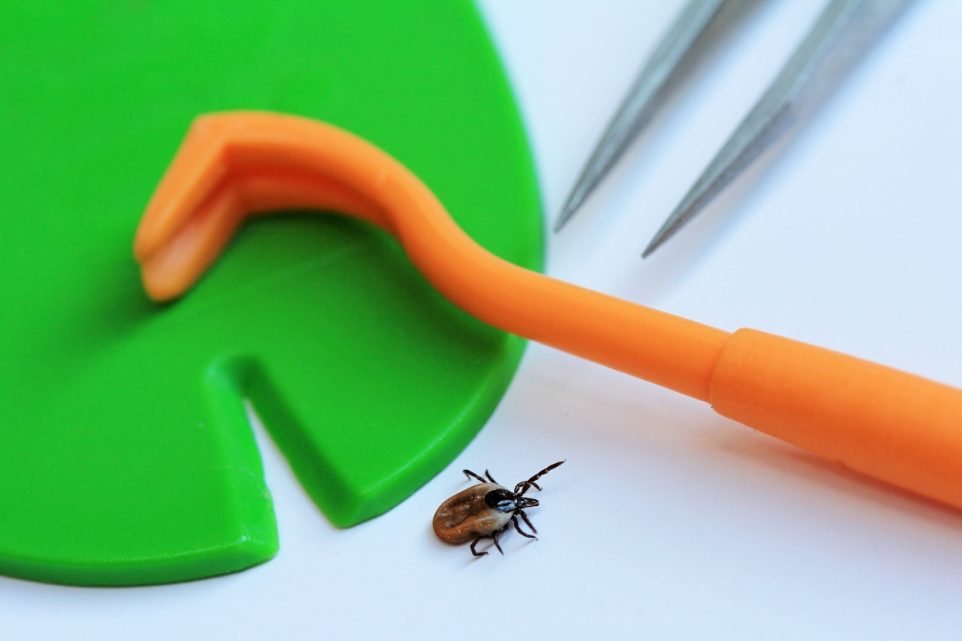Beat the Bite: How to Safely Remove a Tick

Ticks are small, eight-legged parasites that attach themselves to hosts — usually humans or animals — and feed on their blood. Though they aren’t necessarily dangerous, they can spread illnesses like Lyme disease and Rocky Mountain spotted fever, so it’s important to properly and safely remove them.
In this post, we’ll cover what to do if you find a tick on your body. We’ll also give you step-by-step instructions for how to safely and effectively remove them, so you can get back to enjoying life without worrying about your health. So, if you’re ready to beat the bite and prevent tick-borne illnesses, keep reading.
Identify the Species of Tick
Before removing the tick, it is important to determine what species of tick it is. By taking note of the size, color, and shape of the tick, you can easily identify the species with an online search. This information can be important in identifying signs of illness due to potential exposure to disease-causing pathogens as certain ticks can affect you differently depending on the species. Once you’ve identified the type of tick, then you are ready to move on to the next step in learning how to safely remove it from your body.
Prepare the Area
Next, it is important to prepare the area for removal by gathering all necessary tools and supplies such as tweezers, rubbing alcohol, antibacterial soap or solution, cotton balls or swabs, and if preferred, gloves and goggles. Treat your exposure to a tick like any other wound since proper cleaning and disinfection of your skin is necessary to prevent potential infection. It’s best to use alcohol or an antibacterial product to disinfect your skin before the removal of the tick.
Removal Techniques
The most common method used for the removal of a tick is with tweezers, but other methods such as using a small spoon or blunt object may work as well. When removing a tick with tweezers, you’ll need to apply firm pressure to grasp the head area of the tick. This will lock it in place as you gently pull it upwards in one swift motion until it releases from your skin. It is important not to twist or jerk since this may cause the remaining parts of the mouth and head area to embed inside your skin which could lead to infection later down the line. After removal, inspect your skin for any remaining pieces of the tick’s head or mouth still embedded in your skin, and use tweezers or a disinfected needle or blade to remove any remaining parts left behind during removal.
Disposal of the Tick
It is important to dispose of any removed ticks right away, either by flushing them down the toilet or placing it into rubbing alcohol with gloves on. Avoid pinching or crushing an attached tick while disposing of it since this may spread bacteria particles from the tick’s body fluids, which could increase your risk for potential infections caused by exposure.
Cleaning the Bite
Once you have disposed of the tick properly, use rubbing alcohol or an antibacterial solution over wound areas to cleanse them, and apply an over-the-counter antiseptic cream for added protection against infection if desired.
Symptoms to Monitor
Keep an eye out for any symptoms following tick removal such as fever, chills, rashes over areas surrounding where you were bit, headaches, and fatigue. These could indicate more serious illnesses related to your exposure after being bit such as Lyme disease or Rocky Mountain spotted fever (RMSF). If these symptoms occur, seek medical attention right away to ensure proper management of your condition due to the potential risks associated with these serious illnesses.
Preventing Future Tick Bites
To lower the chances of recurring tick bites, there are a few preventative measures you can take. Here are some of the best ways to prevent tick bites:
- Tick Repellants: Using a tick repellent is one of the most effective ways to keep ticks at bay. Be sure to follow all safety guidelines listed by the manufacturer and do not use products containing OLE or PMD on children under 3 years old.
- Lawn Treatments: Giving your lawn a tick-repellant treatment containing permethrin and Talstar will help keep ticks away during tick season and beyond.
- Treating Clothing/Gear: If you are planning a day outside hiking or walking in wooded areas where ticks likely live, it is smart to treat your clothing and boots with products containing 0.5% permethrin using a spray bottle.
- Bright Clothing: When outside, wearing bright/light-colored clothing is helpful because if a tick is on your clothing, you will spot it easily.
- Tall Socks: When outside, wearing tall socks over your pants will make it so ticks cannot climb up from the ground onto your skin.
Conclusion
Ticks can be incredibly dangerous if not dealt with quickly and properly. It’s important to know how to identify a tick, prepare the area for removal, and choose the right removal technique in order to minimize any potential risks associated with exposure to a tick’s saliva or body fluid. Taking these simple steps can help ensure that you beat the bite and successfully remove a tick from your body.
Your Adventure, Our Experience
At TheCampingList, our dedication to authenticity and reliability stems from our own adventures in the great outdoors. Our team, comprised of seasoned experts in hiking, camping, climbing, cycling, fishing, and hunting, rigorously tests every product and shares insights drawn from real experiences. This hands-on approach ensures our reviews and guides meet the highest standards of durability, functionality, and comfort. Moreover, our platform thrives on the rich contributions and feedback from our vibrant community of enthusiasts. We pride ourselves on delivering unbiased, educational content that empowers and informs your outdoor pursuits. Trust in TheCampingList for genuine advice and support, where we're all about enriching your journey, every step of the way.